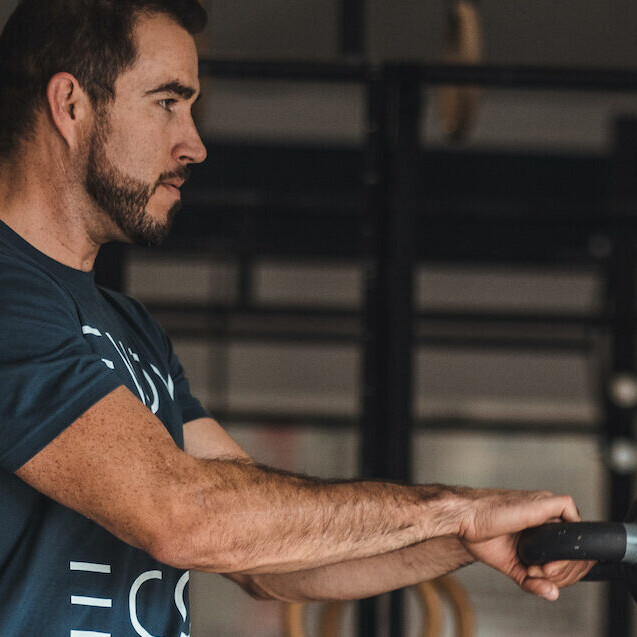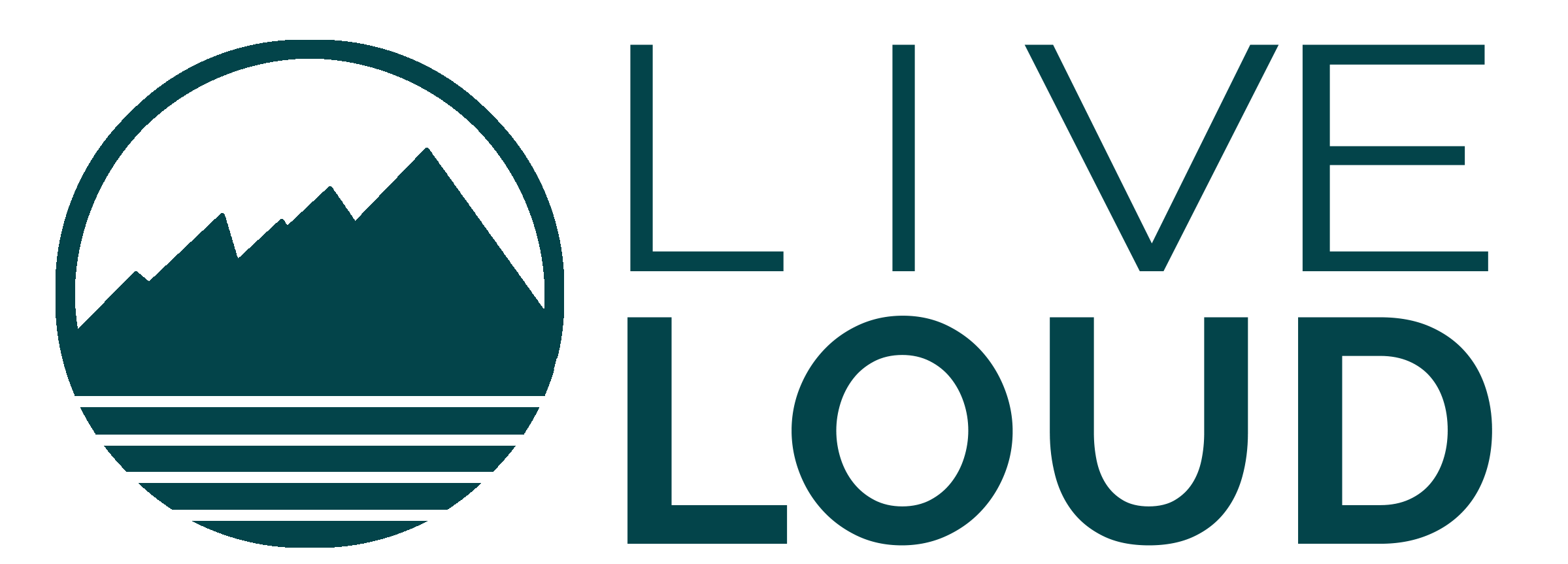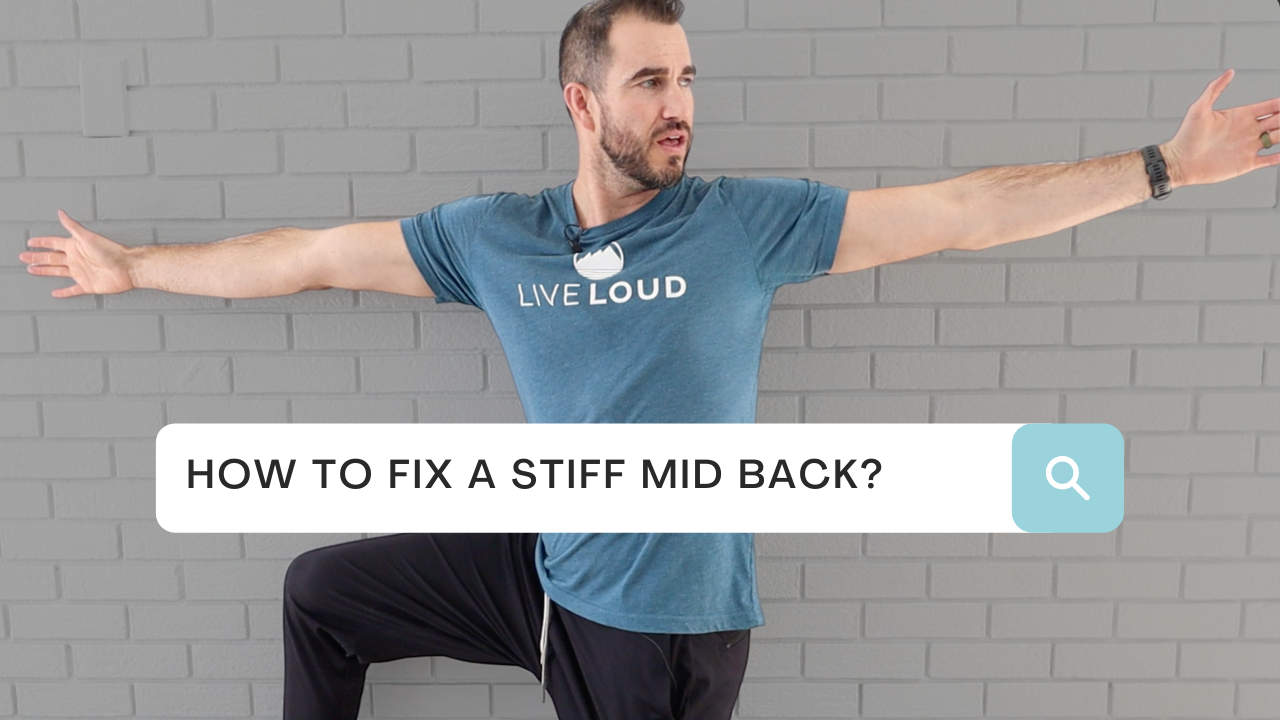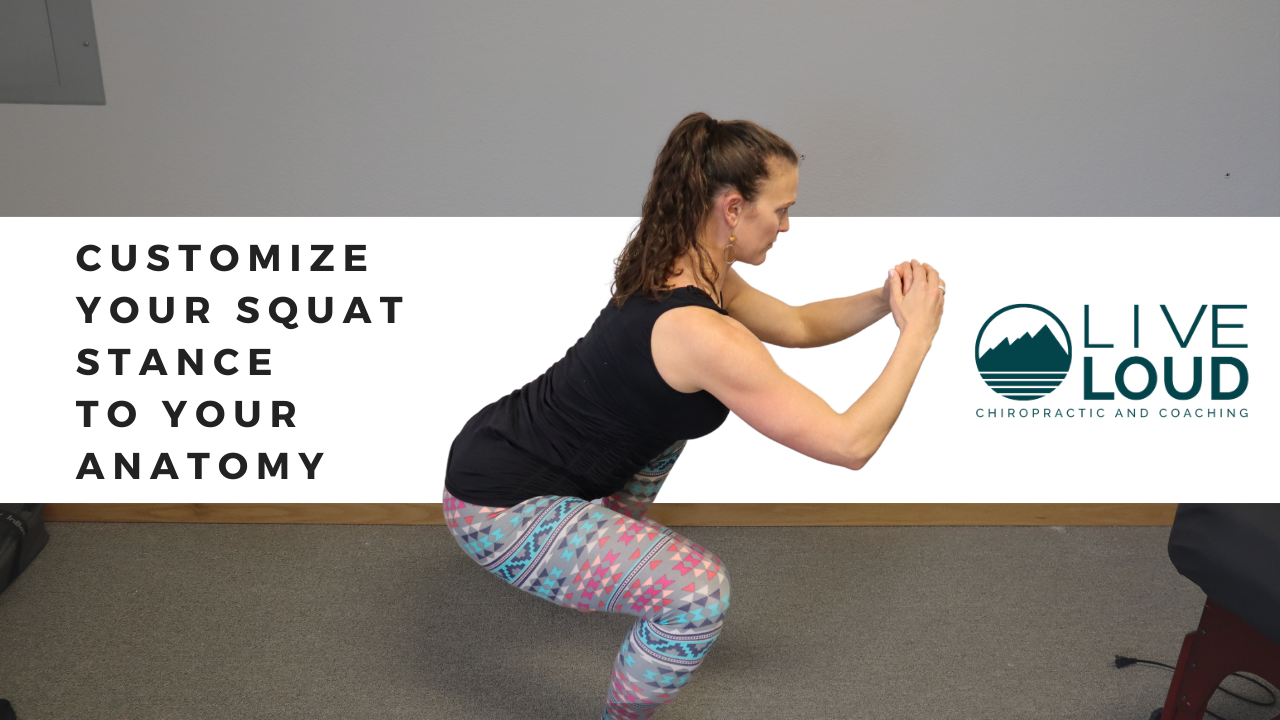Live LOUD Life PodcastLafayette Colorado
Episode 79
Rehab Purgatory & Why You Are Not Progressing
With Dr. Antonio Gurule
Rehab Purgatory is the center of today’s discussion on the Live Loud Life Podcast with Dr. Gurule. Rehab Purgatory is when someone gets locked up or stuck in an element of needing to be able to achieve a specific set of goals before being able to work out, train, or return to regular fitness and exercise routines.
In Dr. Gurule’s experience, it is a critical to have a conversation about Rehab Purgatory and overcoming it with many of his injured patient, epsecially those with chronic pain who feel like they’re kind of stuck in this loop of not getting better.
Episode Highlights:
(00:44) Big Announcement, Baby News
(02:34) Rehab Purgatory Basics
(07:32) Root Causes Phrased in Context
(09:48) Neural Drive in Movement Patterns: Post Injury
(11:49) Moving Beyond Rehab Purgatory
About Dr. Antonio Gurule

Background:
- Father
- Doctor of Chiropractic
- Owner of Live LOUD
- Personal Trainer & Health Coach
Check Out Some of Our Other Blog Posts and Podcast Episodes
Why You Are Not Advancing | EP 79
[00:00:00] Dr. Antonio Gurule: What’s going on. So, in today’s episode, we’re gonna be talking about, uh, what we refer to as like rehab purgatory. Basically, a lot of us get locked up and stuck in this element of, I need to be able to do X, Y, and Z appropriately before I’m able. To workout train or, or, or, you know, return back to fitness or exercise or some or something like that.
[00:00:22] So this is a, uh, this is a critical conversation that we have a lot with our injured patients, but also even more importantly, with, with chronic pain patients who feel like they’re kind of stuck in this loop of not getting better. So, I hope you enjoy the show.
Big Announcement, Baby News
[00:00:44] Dr. Antonio Gurule: Welcome back guys. Welcome to another episode of the live loud life podcast. My name is Dr. Antonio, your host of the live loud life podcast. Um, Short bit of exciting news. Uh, I’m not sure when these episodes necessarily air, um, I just try to film ’em and, and get ’em out onto seven, any particular schedule, but we’re expecting baby number four, uh, surprise to both of us, uh, still kind of wrapping my head around that we’re are Michelle, my wife and I, we’re gonna be doing some recaps too, of like first trimester recap.
[00:01:15] And then she’s gonna be doing kind of like a weekly vlog that just kind of. Updates on, you know, how pregnancy’s going, what this stage looks like, her nutrition, her supplementations, and things like that. So, so for those of you who are in this phase of life, uh, and you’re curious about that, be sure to check that out, we’ll have a whole different section, uh, within our YouTube page, that’ll be highlighting that.
[00:01:37] And we’ll probably air a few of those episodes here on the live wildlife podcast as well. Uh, and be sure to be sure to subscribe hit the little, uh, bell notification. If you follow, follow us on YouTube, uh, subscribe, whether that’s on. Podcast or wherever you listen to your podcast, uh, to get that information as well.
[00:01:54] And then if you’re not following us on Instagram, uh, our handle is live.dot life. Um, uh, that’s on that’s that’s our Instagram handle. So, we, we post obviously a lot more short form content there, but you can, you. Get a little bit more of that because our podcast episodes, the narrative that we’re describing is less demonstrative purposes, right.
[00:02:15] Uh, you’re hearing to me talk more theoretical concepts on and so forth, but if you’re interested in seeing some movement breakdowns or getting some Kele ideas, we’ve been dropping that, uh, more recently, some Kele complexes, be sure to get that on YouTube and Instagram, because that’s where that information is going to be.
[00:02:33] Enough of the housekeeping.
Rehab Purgatory Basics
[00:02:34] Dr. Antonio Gurule: So, rehab purgatory, um, as, as described in that intro there, what happens commonly is. Everyone’s marketing and advertising is around getting to the root cause. And that is important. And we talk about that as well, but sometimes we see that taken too far and providers and practitioners, or even individuals feel it is they’re responsible to understand what all the tiny little nuances and underlying.
[00:03:09] Potential triggers or cause that might be there in order to quote unquote, fully heal and make yourself able and ready to return. Now, this is a very, very broad concept. Um, and, and, and topic, because while I am, while I’m saying this, I am not negating or downplaying the, the importance of understanding.
[00:03:32] Baseline movement principles or certain restrictions or weaknesses within the body that obviously are attributing to. To a, to, to pain, to, to your recovery, so on and so forth. But I do find that, and we’re, we, we treat gen population, right? While we do have athletes that we work with, uh, this narrative and conversation changes a little bit, but even more importantly, with athletes, they’re trying to get right back into their, their field to play as quick as possible.
[00:04:03] And. For, for the majority of us who are following along and paying attention after an injury, after you get injured, there is a, there is a period of obviously recovery, right? And, uh, there’s, there’s, there’s, there’s certain elements that we need to be able to hit and do during that recovery process. Now, when we’re returning.
[00:04:25] We see from PTs massage, chiropractors, personal trainers, anyone who’s kind of involved in this quote unquote rehab, um, world or rehab, uh, profession, is we wanna give exercises that help stairstep you into the next level. But. The foundation of progressive, meaning you are progressing is progress, right?
[00:04:51] You need to be able to show progress in order for us to feel like we’re actually going anywhere. And this was, this was sparked by two of our more recent patients who were stuck in this element of. I, I don’t feel ready, or I cannot do something until I loosen up and I stretch, and I work on these imbalances or these weaknesses within my body.
[00:05:14] And we, we just, you know, we encourage the question of like, well, what do you think would happen if you started working out or training and you did not have those elements completely, uh, fixed or dealt with. And. Essentially the conclusion came to well, I, it wouldn’t change all that much. Um, uh, you know, some were worried of running the risk of potentially re-injury again, but, but, but going through the assessment and the orthopedic evaluation and, and highlighting that the likelihood and, and through the assessment process, we don’t think anything’s actually broken or damaged the likelihood of you re-injury or doing something bad because your imbalances or your weaknesses or your tightness, your tightness is not fixed.
[00:05:53] It’s pretty low. Right? So, what we try to encourage is just trying to gain some momentum, right? When you’re an acute injury, sometimes we have to slow people down, but there’s still a lot that you can do early on in your acute phase of maintaining the progress that you had, maintaining mobility strength in other areas of your body, while that healing process go is going on.
[00:06:15] But more importantly, this is for these chronic patients who have had. Issues realistically more than three months, but we’re looking at six a year or even two years down the road and they just get stuck. It’s just like, my body feels off. It feels tight and I need to stretch all the time and I need to do this or this, but I’m not working out cuz I don’t.
[00:06:37] I, I, I’m just not ready to do that. And, and so we need to encourage them and, and show them, prove to them that their body is in fact, ready.
[00:06:45] Now you’re gonna be sore because you haven’t been working on a training. You can’t downplay that, but, but laying out that conversation, the narrative of just the expectations of like, you will be sore, but that’s different than what you’re experiencing.
[00:06:57] Now. That is a good thing. That means we’re actually working and training muscles and joints and tendons, uh, and tissue so on and so forth. So. If you are finding that you’re stuck in this, this, this loop of, you know, I’m doing all the right things. I’m just not getting anywhere. Or I feel that I’m always having to stretch in order to feel better, to feel looser, or I feel like I always have to activate my glutes are activate my lats or activate a certain muscle group in order to be ready to go.
Root Causes Phrased in Context
[00:07:32] Dr. Antonio Gurule: I think you need to start. Asking different questions and, and figuring out how to just, you know, skip ahead a little bit and see how things go. And the reference that we, we will commonly use is context. Right? All of those things are important. The activations, the stretching, you know, opening up whatever we want to call.
[00:07:55] Are things that we discuss and the things that we, we definitely use, there are certain limitations, quote, unquote root causes that are the reason why we’re not able to progress or deal with a chronic injury or something like that. Right. But unless you phrase it with some context, uh, your body’s not gonna know what to do with it.
[00:08:16] Right? So, uh, just this morning we had a new patient who was talking about firing his, firing his glutes, right? He’s worked with PTs personal trainers, a number of different people where he’s just had this issue where he is not been able to fire his glutes. And he’s just wrapped up in this idea that he cannot do squats and other big quote unquote movements, unless he’s able to fire his glutes.
[00:08:38] And so, you know, the, the first question was, well, how do you even know if your glutes are firing? And simply was, it was well, they get sore. Well, soreness goes beyond activation and firing, right. Soreness means you’re actually working ’em out. So that movement you’re doing is still good. But if you’re just doing that without any progress, you’re not able to create more context for your body that allows it to understand how the movement principles are applied and how you start connecting the dots to be able to hike longer.
[00:09:11] Be stronger in a sport to be able to lift more weights, to feel more able bodied with, you know, yard worker projects around the house. So we use this phrase of context commonly because it helps create a better narrative between how your body operates. Again, all the majority of what we’re really talking about doing is we are making physiological changes by loading.
[00:09:36] Excuse me. By loading the tendons, the muscles, so on and so forth, they will get stronger. They will become more robust. Um, they will, they will become more resilient. That is true. But
Neural Drive in Movement Patterns: Post Injury
[00:09:48] Dr. Antonio Gurule: when we’re talking about recovering from injuries, acute or chronic, a lot of the conversation is, is working on the neural drive in the movement patterns that help you.
[00:10:01] Move again after injury, create confidence after injury, so on and so forth. Cuz we, it is, it has been well documented and showed that we do have decreased muscle activation after an injury. Why? Because your, your body doesn’t want you to injure it again. It suppresses that. And so part of this is, is, is creating movement opportunities or opportunities in which you move that your body can then reintegrate and figure out those pathways again.
[00:10:27] And the more you do that in the different ways that you do that provides a wider range of content, which makes you more able bodied.
Specific Adaptations to Imposed Demands
[00:10:34] Dr. Antonio Gurule: So that’s why the, the said principles, specific adaptations to imposed demands, um, can be a benefit and sometimes a detriment, right? Because that’s that says through specificity, we get better when we do specific things.
[00:10:49] Right? So, if I which the, I have this conversation. Quite often through my biased, likes and wants. I primarily do kettlebell work, right. So I have become very efficient and good at doing kettlebell workouts. Now I can progress it to make it harder for me so that I continue to get stronger. Uh, I try to mix in other elements of kettlebell work that I don’t normally do so I can get some more variety, but my body has become efficient.
[00:11:17] And, and created specific demands, uh, specific adapt adaptations to those imposed demands. Now it helps me, I would have some good carryover to other movements such as barbell and different things like that. But if all I did was ever that and never other things, I, I would lose the ability to lift the barbell well or to do cer certain gymnastic movements or certain body weight movements, because I’m only doing one thing.
Moving Beyond Rehab Purgatory
[00:11:49] Dr. Antonio Gurule: So, this is, this is what happens with the Rehab Purgatory is you get really good at doing glute bridges. You get really good at glued activations, but you can’t do anything more. Your body. Tapped out. So then when you try to return back to fitness, you feel, you feel weak, you feel, um, like your body’s not able to actually do more than, than that.
[00:12:11] And that’s the issue at hand is we just get wrapped up in this. I need to stretch. I need to activate; I need to wait. I need to do this before we actually challenge the body to do. The things that the body needs to do now, what would that be? Well, it depends on the person, right? That’s why you have to have a conversation about your goals and your expectations of what things you actually run, wanna run into, or wanna return to, sorry.
[00:12:34] And, and, and what we always refer back to is, well, so that’s, that’s exactly what we need to do. I have a postpartum patient who wants to return back to running. Is that okay? Have we tried it yet? No. Okay. Well, you need to try it so we can get an idea of where we actually stand. Now we don’t say go run a 5k walk, run, walk, run.
[00:12:51] So on and so forth. Same individual or different individual. Hey, I wanna get back to dead. Great. We’ve built up the foundation of understanding how to activate or how to brace your core, how to hinge, how to do certain things. You have the green light to do it. Nothing’s broken. Nothing’s wrong. Do it, get feedback, come back, give me that context so that we can help reframe re-pattern, reposition, or do whatever we need to do to change it.
[00:13:15] Or you might literally feel, I felt great. Good. Go with it. That’s that’s what we’re looking for is to get that, that, that green light of just. It’s it’s. It’s all good.
Moving to the Next Level when You are Ready
[00:13:26] Dr. Antonio Gurule: So, don’t let yourself be held back just because someone told you you’re not ready. If you feel like you’re ready, you need to start pushing the envelope.
[00:13:35] If you’re getting frustrated, that probably means you’re ready to go to that next level. Um, now I will sidebar. Make a side note, some of you are frustrated cuz you got injured and you can’t rush physiology as far as healing. But again, there are a, a, um, there are many things that you can still do while you are recovering from an injury that allows you to maintain the momentum that you had from working out before.
[00:13:56] Right. So, it’s not just sit and wait and then get sucked back into that loop. Um, So I hope that helps some of you more specifically, this is a little bit more tailored to those that have chronic pain. Who’s just been like, you know, I wanna get back. I’m not sure I’m not ready. I feel like I need to do this, this and this before.
[00:14:13] I know nothing’s wrong, but you know, I, I, I don’t know. Something’s telling you, you need to hold back for whatever reason. And part of it just is a lack of confidence. I can, I completely agree with that. I’m not trying to downplay and say, you’re not doing enough. You’re not pushing yourself. All I’m asking you to do is to try.
[00:14:33] Doesn’t mean, go be dumb about it. Just try it. Then you’ll get some information. You’ll create more context to help your body understand where you actually are at. And then, you know, here’s my starting point or here’s where I’m at right now. I wanna be here. I gotta bridge that gap somehow. And that’s setting up a program.
[00:14:52] That’s understanding movement patterns, that’s understanding lifting, uh, but it doesn’t have to be. That complex. Uh, we’ll, we’ll do another episode here um, coming up, talking about kind of, uh, it’s an integration on my health journey, but why I love kettlebells and just some of the programming that I do now, I will be biased and say, I do have gaps and holes in this programming, but this is kind of a season of life.
[00:15:13] This is where I’m at. And it allows me to get the majority of what I want and what I need out. Training, um, when it’s set up this way. So, if you’re interested in that, uh, be sure to check out the upcoming episodes to get that story. Um, that’s all I got for you guys today. Hopefully that was helpful. Again.
[00:15:30] Uh, one last word of advice is reach out for help. If you feel like you’re stuck, that’s the whole reason why there’s professions like ours. We’re, this is what we’re, this is what we’re good at. We’re good at helping you find the holes, find the gaps, understanding where you are to where you wanna be able to be to, to set up a plan for that.
[00:15:48] And sometimes just to, just to, just to navigate. A conversation with you to say, no, you’re good. You can do this. Right. Uh, sometimes people just want the blessing to be able to move forward. Uh, and, and that gives them all the confidence in the world. So, if, if that’s you and you’re having hesitation, you know where to find this, you can reach out to us, uh, www.live loud, life.com.
[00:16:11] Hello. At live loud life.com is our email. Um, you can call our office (303) 717-6323. Uh, we do virtual Consults as well. So, if you’re, if you’re not local and you want some help, um, again, we just have a conversation like this. I get to know your injury, your chronic injuries, where you are now, what you’re doing, what you wanna be able to do.
[00:16:33] And even if I’m not able to provide hands on care, I promise you that we’ll be able to help set you up with the. Moving forward. Thanks for tuning in guys. Live loud.
–




